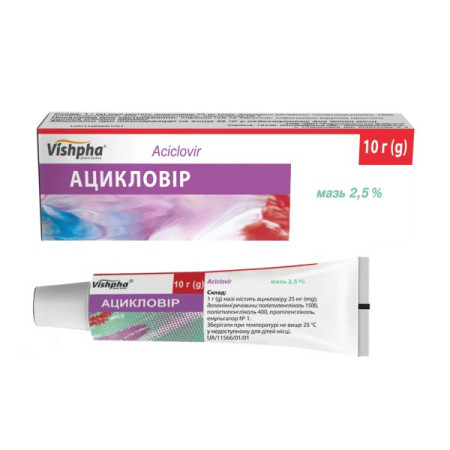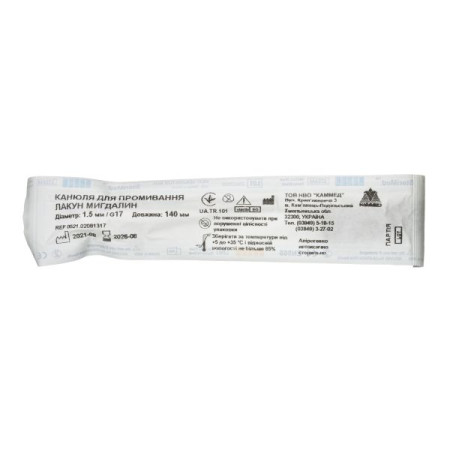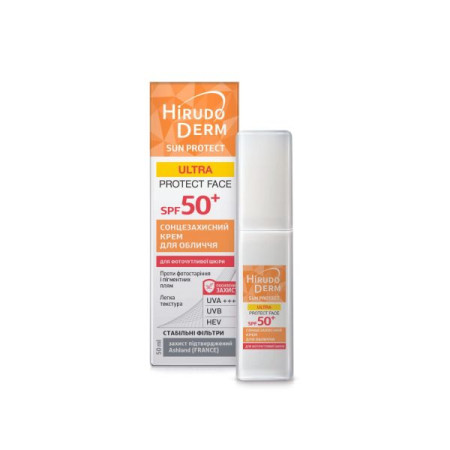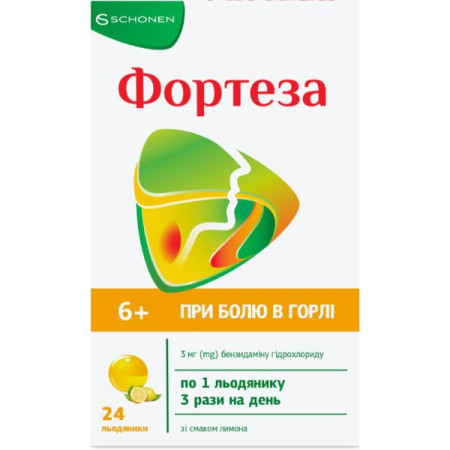Doxepin capsules 25 mg blister No. 30

Instructions for Doxepin capsules 25 mg blister No. 30
Composition
active ingredient: doxepin;
1 capsule contains 10 mg or 25 mg of doxepin as doxepin hydrochloride;
excipients: corn starch, lactose monohydrate, magnesium stearate, sodium lauryl sulfate;
capsule shell: indigo carmine (E 132), titanium dioxide (E 171), gelatin, erythrosine (E 127); for 10 mg capsules, patented blue V (E 131) is added.
Dosage form
Capsules.
Main physicochemical properties:
for 10 mg capsules: body – blue, cap – cherry;
for 25 mg capsules: body – pink, cap – cherry;
White powder in cylindrical capsules with rounded ends and size No. 4.
Pharmacotherapeutic group
Antidepressants. Nonselective inhibitors of neuronal reuptake of monoamines. ATC code N06A A12.
Pharmacological properties
Pharmacodynamics. Doxepin belongs to the group of tricyclic antidepressants. Antidepressant action is combined with anxiolytic and sedative effects.
Doxepin inhibits the reuptake of biogenic amines (norepinephrine and serotonin) in synaptic structures, and also has antihistamine, anticholinergic, and a1-adrenoblocking effects. It does not cause euphoria or psychomotor agitation.
Pharmacokinetics.
Doxepin is well absorbed from the gastrointestinal tract, reaching peak serum concentrations quickly (2-4 hours after administration). Steady-state therapeutic concentrations are achieved approximately 2 weeks after initiation of treatment.
Doxepin is metabolized in the liver, mainly by demethylation to form the main active metabolite, desmethyldoxepin (nordoxepin). The binding of doxepin and its metabolites to plasma proteins is about 76%. The volume of distribution is approximately 20 l/kg. The half-life of doxepin is 8-24 hours, that of the main active metabolite is 33-80 hours. Doxepin crosses the placenta and the blood-brain barrier and is excreted in breast milk.
Indication
Neurotic disorders with symptoms of depression or anxiety.
Organic neuroses associated with insomnia.
Depressive and anxiety states in alcoholism.
Depression and anxiety disorders associated with somatic disorders and diseases.
Depression accompanied by fear and anxiety on the background of psychoses, including involutional depression and the depressive phase of bipolar disorders.
Contraindication
Hypersensitivity to doxepin, tricyclic antidepressants or to any of the excipients of the drug;
manic state;
severe liver disorders;
breastfeeding period;
glaucoma;
tendency to urinary retention;
simultaneous use with monoamine oxidase inhibitors (MAOIs) or use of the latter within two weeks before starting doxepin therapy.
Interaction with other medicinal products and other types of interactions
Doxepin, like other tricyclic antidepressants, is metabolized by cytochrome P450 isoenzymes (CYP2D6). Concomitant use of inhibitors or substrates of these isoenzymes (quinidine, selective serotonin reuptake inhibitors) with doxepin may increase plasma concentrations of tricyclic antidepressants.
The possibility of potentiation of the pharmacological effects of doxepin should be considered when used concomitantly with other antidepressants, alcohol or anxiolytics. Since it is known that MAO inhibitors may potentiate the effects of other drugs and their associated adverse events, doxepin should not be used concomitantly with MAO inhibitors or within two weeks of discontinuation of the latter.
Serotonergic drugs such as buprenorphine, when used concomitantly with doxepin, may increase the risk of serotonin syndrome, a potentially life-threatening condition (see section "Special warnings and precautions for use").
Cimetidine causes significant fluctuations in the equilibrium concentration of doxepin.
Doxepin should not be used concomitantly with sympathomimetics such as ephedrine, isoprenaline, noradrenaline, phenylephrine, and phenylpropanolamine.
Systemic and local analgesics containing sympathomimetics, when used in conjunction with antidepressant therapy, increase the risk of arrhythmia and arterial hypotension or arterial hypertension. If surgery is required, the anesthesiologist should be informed of the therapy the patient is receiving.
Doxepin may reduce the effect of antihypertensive drugs such as debrisoquine, betanidine, guanethidine and clonidine. To prevent the effect of doxepin on the effect of guanethidine, the dose of doxepin should not exceed 150 mg. Monitoring of the patient's condition is recommended when using any antihypertensive drugs and tricyclic antidepressants simultaneously.
Barbiturates may accelerate the metabolism of doxepin.
Doxepin may reduce the effectiveness of sublingual forms of nitrates.
A reduction in the dose of thyroid hormones may be necessary when co-administered with doxepin.
Application features
A single dose regimen is recommended for patients with comorbidities or patients taking other medications. This also applies to patients taking medications with anticholinergic effects.
Elderly patients should also use this dosage regimen and adjust it with caution. These patients are prone to the development of the following adverse reactions: anxiety, confusion and orthostatic hypotension. Therefore, the initial dose should be prescribed with caution and under close monitoring of the patient's condition and response to the drug. Half the dose of doxepin may be sufficient for an appropriate clinical effect.
Patients should be warned that drowsiness may occur during treatment. Alcohol consumption may enhance the effects of the drug.
In case of worsening of psychotic symptoms or manic episodes during treatment with doxepin, it may be necessary to reduce the dose of doxepin or add a neuroleptic to the treatment regimen.
Although doxepin has less effect on the vascular system than other tricyclic antidepressants, it should be used with caution in patients with severe cardiovascular disease (heart block, cardiac arrhythmia, and recent myocardial infarction).
Doxepin should be used with caution in patients with impaired renal or hepatic function and in patients with a history of epileptic seizures.
Serotonin syndrome
Concomitant use of doxepin and other serotonergic agents such as buprenorphine may lead to serotonin syndrome, a potentially life-threatening condition (see section 4.5).
Suicide/suicidal thoughts or clinical worsening
Patients with major depression are at risk of suicidal thoughts and actions, which may persist until significant remission is achieved. As improvement may not occur within the first few weeks of treatment or even longer, patients should be closely monitored until improvement occurs. It is common clinical practice that the risk of suicidal thoughts or actions may be increased in the early stages of treatment.
Other psychiatric conditions for which doxepin is prescribed also carry an increased risk of suicide. In addition, these conditions may be comorbid with major depressive disorder. Therefore, the precautions observed in the treatment of major depressive disorder should also be observed in the treatment of patients with other psychiatric disorders.
Patients with a history of suicidal ideation or suicide attempt, or with a significant level of suicidal ideation prior to initiation of treatment, should be closely monitored throughout treatment. Close monitoring of patients, particularly those at high risk, should be combined with appropriate medication, particularly in the early stages, with subsequent dose adjustments if necessary. Patients (and caregivers of patients) should be warned about the need to monitor closely for any clinical worsening, suicidal behaviour, thoughts or unusual changes in behaviour and to seek medical advice immediately if these symptoms present.
A meta-analysis of placebo-controlled trials of antidepressants in adult patients with psychiatric disorders showed an increased risk of suicidal behavior in patients under 25 years of age compared to placebo.
In patients with moderate prostatic hypertrophy, urinary retention may increase.
Doxepin contains lactose monohydrate, therefore patients with rare hereditary forms of galactose intolerance, glucose-galactose malabsorption syndrome, Lapp lactase deficiency are not recommended to administer this drug.
Patients with hypersensitivity or intolerance to gluten should not use Doxepin, as its excipients include corn starch.
Use during pregnancy or breastfeeding
Animal reproductive studies have not shown any adverse effects on the fetus. There are no adequate and well-controlled studies in pregnant women, therefore, the drug should be used during pregnancy only if the expected benefit to the mother outweighs the potential risk to the fetus.
Doxepin passes into breast milk, so breastfeeding should be discontinued during treatment with the drug.
Ability to influence reaction speed when driving vehicles or other mechanisms
During treatment with doxepin, it is not allowed to drive vehicles or operate complex mechanisms that require concentration of attention, as doxepin may cause drowsiness and increase reaction time.
Method of administration and doses
It is administered orally. The dose of the drug is selected by the doctor individually depending on the severity of the symptoms and the therapeutic effect.
The dose of Doxepin is 30-300 mg per day. Doses up to 100 mg can be administered as a single dose or in divided doses. Doses greater than 100 mg should be administered in 3 divided doses. The maximum single dose is 100 mg (usually administered at bedtime).
In most patients, this dose is satisfactory. In severe forms of the disease, the daily dose is increased to 300 mg (in 3 doses).
In patients with insomnia, the total dose should be divided so that the highest dose is taken in the evening. If insomnia occurs as a side effect, the drug can be used according to this schedule or the dose should be reduced.
After achieving a satisfactory therapeutic effect, the dose of the drug should be adjusted to the minimum maintenance dose.
The reduction of anxiety symptoms when taking Doxepin is achieved earlier than the antidepressant effect. The antidepressant effect is manifested after 2-3 weeks of treatment.
Elderly patients with moderate symptoms of the disease are recommended half of the usual recommended dose of doxepin (10-50 mg daily). Satisfactory clinical effects have been obtained after the use of Doxepin at a dose of 30-50 mg per day. The dose of the drug should be adjusted individually, depending on the clinical response of the patient to the drug.
Patients with impaired liver function should have their dose reduced.
Children.
The safety and effectiveness of Doxepin in children have not been established.
Overdose
Symptoms: drowsiness, stupor, visual disturbances, dry mouth.
If such symptoms occur, the drug should be discontinued and the patient should be examined.
If necessary, supportive therapy is prescribed.
In case of severe overdose, the following are possible: drowsiness, respiratory depression, decrease/increase in blood pressure, coma, convulsions, arrhythmia, tachycardia, urinary retention (bladder atony), decreased peristalsis (functional intestinal obstruction), hyperthermia (or hypothermia), pupil dilation, hyperactive reflexes. Fatal outcomes have been recorded as a result of doxepin overdose when the drug is used as monotherapy or in combination with other drugs or alcohol.
Treatment. Discontinuation of the drug, gastric lavage, artificial ventilation of the lungs, monitoring of the cardiovascular system, use of hypnotics, if necessary - intravenous administration of physostigmine salicylate 1-3 mg. In case of convulsions, standard anticonvulsant therapy may be necessary. However, barbiturates may increase respiratory depression. Hemodialysis and forced diuresis are ineffective.
Side effects
Doxepin is generally well tolerated. The severity of most adverse reactions is low. They occur at the beginning of treatment and disappear with continued use of the drug or with a decrease in its dose (if necessary). Some of the adverse reactions listed below are not specific to doxepin, but the possibility of these reactions should be considered due to the similarity of its pharmacological properties with other tricyclics.
Adverse reactions are classified according to frequency of occurrence: very common (>1/10); common (>1/100, <1/10); uncommon (>1/1000, <1/100); rare (>1/10000, <1/1000); very rare (<1/10000); unknown (frequency cannot be estimated from the available information).
From the nervous system and psyche
Very common: drowsiness.
Uncommon: headache, dizziness, insomnia, nightmares, confusion, disorientation, agitation, numbness or paraesthesia, tremor (usually moderate). Extrapyramidal symptoms, including tardive dyskinesia, may occur when using high doses (especially in elderly patients).
Rare: hallucinations, ataxia (generally when several drugs acting on the CNS are used), seizures (in patients prone to seizures, which may be caused by brain damage or alcohol and drug use).
Not known: suicidal thoughts and behavior*.
From the organs of vision
Very rare: visual disturbances (blurry vision).
From the hearing organs
Rare: tinnitus.
From the vascular system
Rare: orthostatic hypotension, facial flushing.
From the heart
Very rare: tachycardia, ECG abnormalities (widening of the QRS complex, prolongation of the PR interval).
On the part of the immune system
Uncommon: allergic reactions including skin rash, facial swelling, photosensitivity, pruritus, urticaria.
During treatment with tricyclic antidepressants, exacerbation of bronchial asthma is possible.
Skin and subcutaneous tissue disorders
Rare: increased sweating, allergic skin reactions mentioned above.
Very rare: alopecia.
Blood and lymphatic system disorders
Rare: eosinophilia and bone marrow dysfunction with the following symptoms: agranulocytosis, leukopenia, thrombocytopenia, purpura and hemolytic anemia.
Gastrointestinal tract
Very common: dryness of the mucous membranes of the mouth and nose, constipation.
Rare: nausea, vomiting, dyspepsia, taste disturbance, diarrhea, anorexia, aphthous stomatitis.
From the endocrine system
Rare: impaired secretion of antidiuretic hormone, gynecomastia, breast enlargement, galactorrhea in women.
Isolated cases: increased or decreased libido, testicular swelling, increased or decreased blood glucose levels.
Renal and urinary disorders
Rare: urinary retention (in men in whom this disorder is a consequence of prostatic hypertrophy, complaints may worsen).
Hepatobiliary system
Rare: jaundice.
General violations
* Cases of suicidal ideation and suicidal behaviour have been reported during doxepin therapy or early after treatment discontinuation (see section 4.4).
Psychotic manifestations, including mania and paranoid delusions, may be exacerbated during treatment with tricyclic antidepressants.
Doxepin withdrawal
Abrupt discontinuation of tricyclic antidepressants may result in withdrawal symptoms, including insomnia, irritability, and excessive sweating. Withdrawal symptoms in newborns whose mothers took tricyclic antidepressants during the third trimester include respiratory depression, convulsions, and hyperreflexia.
Class-specific effects of SSRI drugs
Epidemiological studies, mainly in patients aged 50 years and older, have shown an increased risk of bone fractures in patients treated with selective serotonin reuptake inhibitors (SSRIs) and tricyclic antidepressants. The mechanism of this risk is unknown.
Expiration date
4 years.
Storage conditions
Store at a temperature not exceeding 25 °C in a place protected from light and out of the reach of children.
Packaging
10 capsules in a blister; 3 blisters in a cardboard box.
Vacation category
According to the recipe.
Producer
Teva Operations Poland LLC.
Address
80 Mogilska Street, 31-546 Krakow, Poland.
There are no reviews for this product.
There are no reviews for this product, be the first to leave your review.
No questions about this product, be the first and ask your question.


















